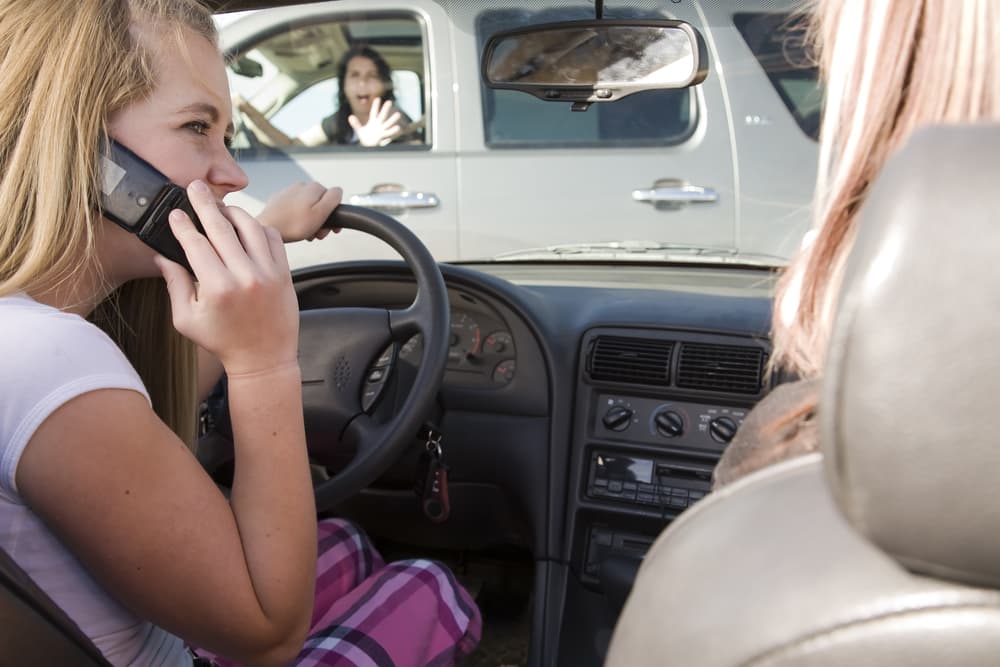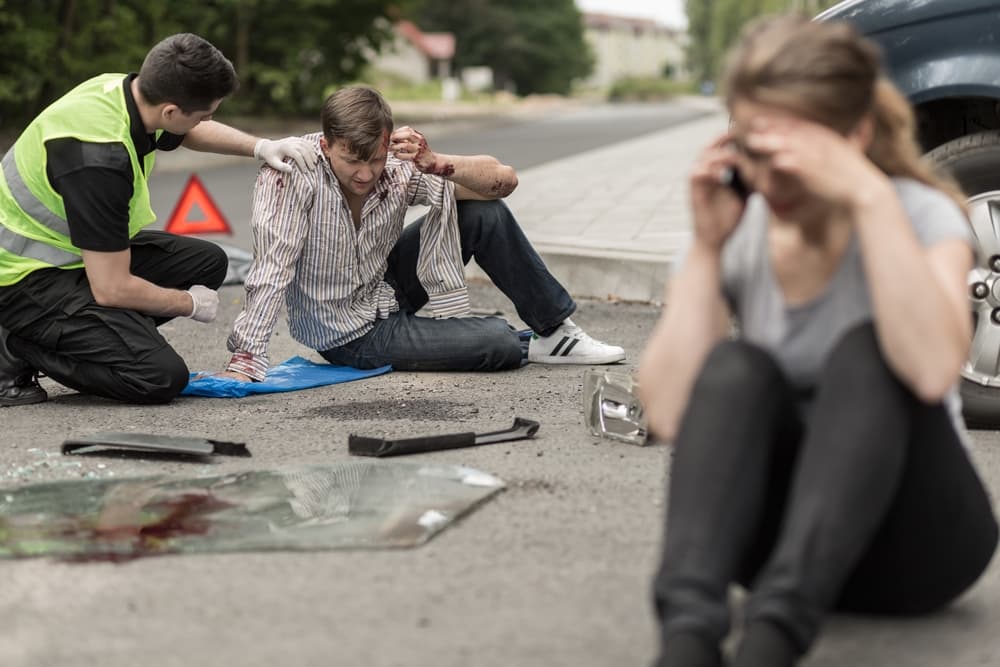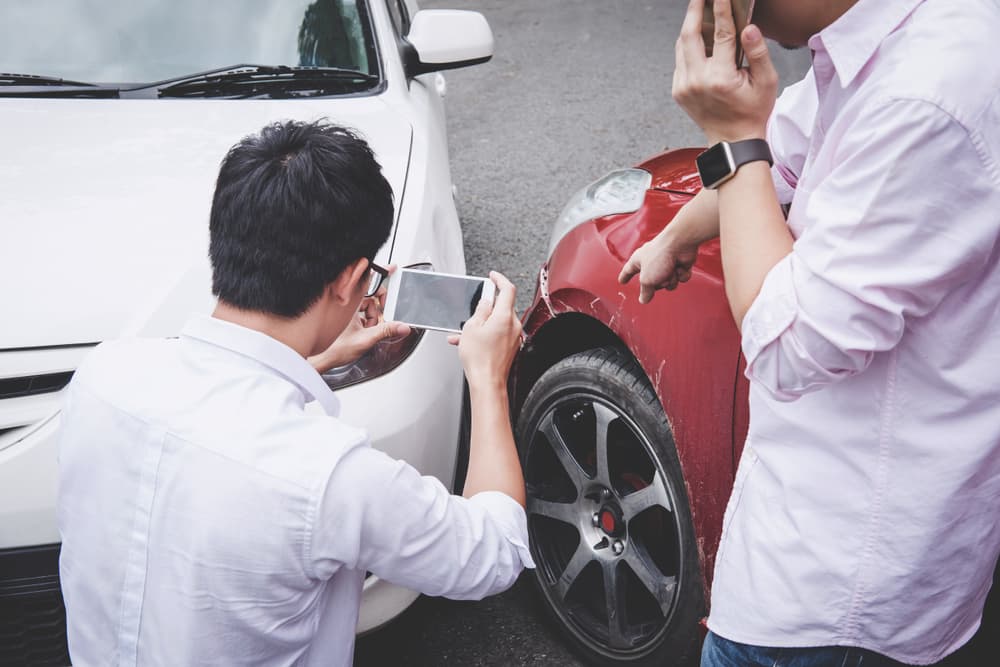Car accidents are common in California and result from a variety of causes. Car accidents also vary by type and severity, ranging from minor fender-benders to devastating collisions that cause serious injuries and fatalities.
This article explores the different types of car accidents in California, their causes, and their potential for causing severe or fatal injuries to those involved. If you suffer injuries in a traffic accident someone else caused and want to pursue compensation for your injuries and losses, contact an experienced California, Ontario car accident lawyer near you for a free consultation.
Common Vehicle Crashes in California
Car accidents can occur in various ways in California, and their classification often depends on the specific circumstances and the nature of the collision. Here are some common types of car accidents:
Rear-End Collisions
Rear-end accidents occur when one vehicle strikes the back of the vehicle in front. It is often the result of tailgating, distracted driving, or sudden stops. Rear-end collisions typically happen more often than other types of vehicle accidents, and they have the lowest rate of fatalities than other types of traffic accidents. Still, rear-end collisions can cause severe injuries that require extensive medical treatment and therapy.
Head-On Collisions
These accidents happen when the front ends of two vehicles collide. They are often severe and can lead to significant injuries or fatalities.
Side-Impact Collisions
Also known as broadside or T-bone collisions, side-impact collisions occur when the front of one vehicle crashes into the side of another, forming a "T" shape. Intersections are common locations for T-bone collisions. They can result in serious injuries due to a lack of safety features and protection against impact.
Sideswipe Accidents
Sideswipe accidents happen when the sides of two parallel vehicles come into contact. It can occur when drivers change lanes without proper signaling or checking their blind spots. In a sideswipe accident, one or both vehicles involved may lose control and swerve into other lanes, potentially leading to ancillary collisions with other vehicles. Vehicles involved in a sideswipe collision may leave the road altogether where they can strike stationary objects like utility poles or trees. These types of accidents can cause catastrophic injuries that may prove fatal.
Roll-Over Accidents
A rollover accident occurs when a vehicle flips onto its side or roof. It is often associated with high-speed collisions, sharp turns, or top-heavy vehicles like SUVs. Fires and explosions can occur in rollover accidents due to spilled fuel or fuel tank punctures. These types of crashes can also eject a car’s occupants, leading to severe, life-threatening injuries.
Single Vehicle Accidents
These accidents involve only one vehicle and can include incidents like running off the road, hitting a stationary object, or rolling over. Numerous circumstances can lead to single-vehicle accidents, such as colliding with or trying to avoid colliding with an animal on the road, mechanical defects with a car’s components, weather conditions, driver error, and more.
Multi-Vehicle Pileups
Accidents involving three or more vehicles often occur on highways or freeways. They are typically chain-reaction collisions with multiple points of impact. Multi-vehicle collisions can cause severe injuries to occupants, especially those in vehicles struck by more than one car. Determining liability in multi-vehicle crashes can be challenging due to the number of potentially at-fault parties involved.
What Are the Major Causes of Car Accidents in California?

No matter the type, car accidents can result from a variety of factors or a combination of factors. Some major causes of car accidents in California include:
- Distracted Driving: One of the leading causes of accidents is driver distraction. Drivers can become distracted by activities such as texting, talking on the phone, eating, or using in-car entertainment systems while driving.
- Speeding: Driving at speeds higher than the posted limits or driving too fast for road conditions reduces a driver’s reaction time to avoid a collision. Speeding is another common cause of car accidents of all types, and it usually increases the severity of the collision and any resulting injuries.
- Drunk Driving: Operating a vehicle under the influence of alcohol or drugs significantly impairs a driver's ability to operate a vehicle safely. Even certain prescription drugs can impair a driver’s cognitive and motor skills, leading to an accident. Many drunk driving accidents result in serious injuries or fatalities to other car occupants.
- Reckless Driving: Aggressive and reckless behaviors such as tailgating, weaving in and out of traffic, and disregarding traffic signals contribute to accidents.
- Weather Conditions: Adverse weather conditions such as rain, snow, ice, or fog can reduce visibility and traction, leading to an increased risk of accidents. Drivers must slow down and exercise extra caution when driving in inclement weather.
- Driver Fatigue: Driving while fatigued or drowsy can impair a driver's alertness, concentration, and reaction time, increasing the likelihood of accidents.
- Running Red Lights and Stop Signs: Ignoring traffic signals and signs at intersections can lead to collisions, particularly T-bone accidents.
- Poor Road Conditions: Potholes, uneven road surfaces, and lack of proper signage or lighting can contribute to accidents.
- Inexperienced Drivers: Inexperienced or novice drivers may lack the skills to navigate challenging situations, increasing the risk of accidents.
- Failure to Yield Right of Way: Not yielding the right of way at intersections or when merging can result in collisions. Failing to yield the right of way can cause sideswipe accidents, rear-end collisions, and T-bone accidents.
- Mechanical Failures: Vehicle malfunctions, such as brake failures or tire blowouts, can lead to accidents if drivers are unable to maintain control of their vehicles.
- Tailgating: Following other vehicles too closely reduces the time available for a driver to react and stop, increasing the risk of rear-end collisions.
All drivers have a duty to act responsibly behind the wheel and avoid placing others on the road at risk. Those who suffered injuries in a car accident a negligent or reckless driver caused may qualify to obtain compensation through a personal injury claim from the driver or drivers responsible.
What Types of Injuries Result from Car Accidents in California?

Car accidents in California can lead to a wide range of injuries. The severity of injuries can vary depending on factors such as the speed of the vehicles involved, the use of seat belts, and the types of vehicles. Some common injuries resulting from car accidents include:
- Whiplash: Whiplash is a common injury in rear-end collisions, where the neck is forcefully jerked back and forth. It can cause neck pain, stiffness, headaches, and other symptoms.
- Fractures: Broken bones can occur in various parts of the body, especially in high-impact collisions. Common fracture sites include the arms, legs, ribs, and pelvis.
- Head Injuries: Traumatic brain injuries (TBI) can occur when the head makes contact with the interior of the vehicle or external objects. Concussions and more severe brain injuries may result. Brain injuries may also occur due to the violent jostling of the head during a collision, where the brain smashes into the inside of the skull.
- Spinal Cord Injuries: Damage to the spinal cord can lead to paralysis or loss of sensation in different parts of the body. The severity depends on the location and extent of the injury.
- Internal Injuries: Blunt force trauma can cause damage to internal organs such as the liver, spleen, or kidneys. These injuries may not always be immediately apparent and can be life-threatening.
- Soft Tissue Injuries: These include injuries to muscles, ligaments, and tendons. Strains, sprains, and contusions are common in car accidents.
- Cuts and Lacerations: Broken glass, metal, or other objects in the vehicle can cause cuts and lacerations. In severe cases, these injuries may require stitches or surgery.
- Burns: If a vehicle catches fire or its fuel tank explodes, occupants may suffer burns of varying degrees. People may also suffer burns by contacting hot surfaces, such as exhaust pipes and engine components, or hot fluids, such as radiator antifreeze.
- Emotional and Psychological Injuries: The emotional impact of a car accident can lead to conditions such as post-traumatic stress disorder (PTSD), anxiety, and depression.
Although seat belts and airbags save lives and reduce the severity of injuries in car accidents, they can cause injuries themselves. Seat belts can cause chest contusions or abdominal injuries in high-impact collisions, and airbags may cause abrasions, burns, or bruises. You can still recover compensation for these types of injuries from a negligent driver since the injuries would not have occurred were it not for the other driver’s wrongdoing.
It's important to seek medical attention promptly after a car accident, even if injuries seem minor initially, as some injuries may not manifest symptoms until later. Additionally, documenting injuries and obtaining a medical evaluation is crucial for any potential legal or insurance claims. If you or someone else is involved in a car accident, you should consult a car accident attorney to discuss your rights and options for pursuing compensation.
What Should I Do After a Car Accident in California?
Following a car accident in California, you need to take certain steps to ensure your safety, the well-being of others involved, and to protect your rights if you wish to pursue legal action.

- If possible, move to a safe location, especially if the accident occurred on a busy road. Turn on hazard lights to alert other drivers.
- Assess yourself, passengers, and others involved in the accident for injuries. Call 911 immediately if there are injuries that require emergency medical attention. Even if injuries seem minor, seek medical attention promptly. Some injuries may not be immediately apparent.
- Contact the police to report the accident, especially if there are injuries or significant property damage. California law requires parties to report the accident to the California Department of Motor Vehicles (DMV) within 10 days if there are injuries or fatalities or property damage exceeding $1,000. Be sure to obtain the names and badge numbers of responding officers.
- Exchange information with the other parties involved, including:
- - Names and contact information
- - Insurance details
- - Vehicle registration information
- - Driver's license numbers
- Take photos of the accident scene and document as much as you can about the crash, including:
- - Vehicle damage
- - License plates
- - Street signs
- - Traffic signals
- - Skid marks
- Obtain contact information from any witnesses. Their statements may be valuable later.
- Avoid admitting fault or making statements that could be interpreted as an admission of guilt. Don’t apologize for the accident even if you weren’t at fault, as the insurance company could take that as an admission of guilt.
- Contact your insurance company to report the accident as soon as possible. Provide them with accurate and detailed information about the incident.
- Keep records of all documents related to the accident, including medical bills, repair estimates, and communications with insurance companies.
- Cooperate with the police, insurance companies, and any legal authorities involved in the investigation.
You should consult an experienced car accident attorney in your area as soon as possible after suffering injuries in a car crash someone else caused. A lawyer can review your case to determine if you have a valid claim. If so, they can help gather evidence, establish liability, and navigate the process of filing an injury claim against the at-fault driver.
California Car Accident Statistics
As the most populous state in the country, California reports the highest number of traffic-related fatalities annually than any other state. In a recent year, more than 3,200 fatal car accidents occurred in California. On average, anywhere from 320,000 to 350,000 car accidents occur in California, and more than 90% of those crashes involve human error. Other California car accident statistics of note include:
- 41% of California car accident deaths involved speeding.
- More than 29% of car accident fatalities involved alcohol impairment.
- Distracted driving caused more than 27,000 car accident injuries in a recent year.
- California accounts for around 11% of all traffic-related fatalities in the U.S.
- More motor vehicle fatalities occur in October than at other times of the year.
- 29% of car accident fatalities involved drivers under 21, and drivers between 20 and 24 have the highest rate of motor vehicle fatalities.
The use of seat belts decreases car accident fatalities, and more than 80% of California drivers report using seat belts. Nevertheless, tens of thousands of people suffer serious injuries and thousands more die in California car accidents each year.
Get Compassionate, Experienced Legal Representation Following a Car Accident in California

If you suffered injuries or lost a loved one in a car accident in California and wish to pursue compensation, don’t try to navigate the legal complexities on your own. Seek the guidance of an experienced California car accident attorney to protect your rights and pursue the compensation you deserve.
The California, Ontario personal injury lawyers at Banderas Law are here for you and your family. We have extensive experience helping clients recover full compensation for the injuries and losses they sustained due to another driver’s negligence.
Let us advocate for you during this challenging time and help improve your chances of obtaining the maximum compensation you deserve. Contact us today for a free consultation.